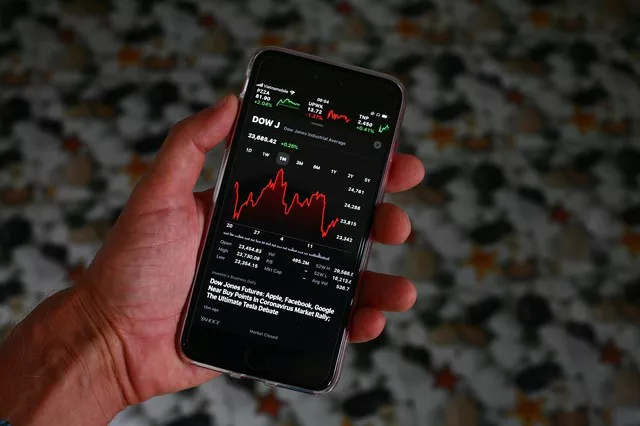In the world of commodities trading, futures contracts provide investors and traders with a platform to speculate on or hedge against the future price movements of various assets, including metals like nickel. Understanding the symbols used to identify different futures contracts is crucial for navigating the futures market effectively. In this article, we explore the symbol for nickel futures trading, examining its significance, structure, and implications for market participants.
Symbol for Nickel Futures Trading
The symbol for nickel futures trading varies depending on the exchange where the contracts are listed and traded. The most commonly used symbols for nickel futures contracts are based on standardized conventions established by commodity exchanges such as the London Metal Exchange (LME) and the Shanghai Futures Exchange (SHFE).
LME Nickel Futures Symbol: The LME, one of the world’s leading commodity exchanges for metals trading, uses a standardized symbol for nickel futures contracts. The symbol for LME nickel futures consists of three elements:
The root symbol: The root symbol for LME nickel futures is “NI,” which represents the underlying metal, nickel.
The month code: The month code indicates the delivery month of the futures contract and is represented by a single letter corresponding to the calendar month. For example, “F” represents January, “G” represents February, “H” represents March, and so on.
The year code: The year code indicates the delivery year of the futures contract and is represented by the last digit of the year. For example, “2” represents the year 2022, “3” represents 2023, and so forth.
Combining these elements, the symbol for an LME nickel futures contract expiring in March 2022 would be “NIM3.”
SHFE Nickel Futures Symbol: The SHFE, the primary futures exchange in China for non-ferrous metals, also uses a standardized symbol for nickel futures contracts. The symbol for SHFE nickel futures follows a similar structure to that of the LME, consisting of the root symbol, month code, and year code.
The root symbol: The root symbol for SHFE nickel futures is “NI.”
The month code: The month code is represented by a single letter corresponding to the delivery month, following a similar convention to the LME. For example, “A” represents January, “B” represents February, “C” represents March, and so on.
The year code: The year code is represented by the last digit of the delivery year.
Using this structure, the symbol for an SHFE nickel futures contract expiring in March 2022 would be “NICH2.”
Significance of the Symbol for Nickel Futures Trading
The symbol for nickel futures trading serves several important purposes for market participants:
Identification: The symbol provides a standardized and easily recognizable format for identifying specific nickel futures contracts within the futures market. By understanding the symbol’s structure and components, traders can quickly identify the delivery month and year of a futures contract, enabling them to make informed trading decisions.
Communication: The symbol facilitates communication among traders, brokers, and other market participants involved in nickel futures trading. Traders can use the symbol to reference specific contracts when discussing trading strategies, analyzing market trends, or placing orders with their brokerage firms.
Contract Specification: The symbol conveys essential information about the contract’s specifications, including the underlying asset (nickel), delivery month, and delivery year. This information is crucial for ensuring that traders understand the terms and conditions of the futures contract they are trading.
Market Transparency: By using standardized symbols, commodity exchanges promote transparency and efficiency in futures markets. Traders can access information about nickel futures contracts through trading platforms, market data providers, and exchange websites, facilitating price discovery and market liquidity.
Implications for Market Participants
Understanding the symbol for nickel futures trading has several implications for market participants:
Trading Strategies: Traders can use the symbol to identify specific nickel futures contracts that align with their trading strategies and objectives. For example, traders may focus on contracts expiring in certain months or adjust their trading positions based on changes in delivery dates.
Risk Management: The symbol provides essential information for managing risk exposure in nickel futures trading. Traders can monitor contract expiration dates and adjust their positions accordingly to avoid delivery obligations or rollover contracts before expiration.
Market Analysis: Analysts and researchers use symbols to track and analyze trends in nickel futures trading, including trading volumes, open interest, and price movements. By examining historical data for specific contracts, analysts can identify patterns and develop insights into market dynamics.
Conclusion
In conclusion, the symbol for nickel futures trading is a standardized format used to identify specific futures contracts within commodity exchanges such as the LME and SHFE. The symbol’s structure includes components that represent the underlying asset (nickel), delivery month, and delivery year, enabling market participants to identify, communicate, and analyze futures contracts effectively. Understanding the symbol for nickel futures trading is essential for traders, investors, and industry stakeholders seeking to navigate the futures market and capitalize on opportunities in nickel trading.


